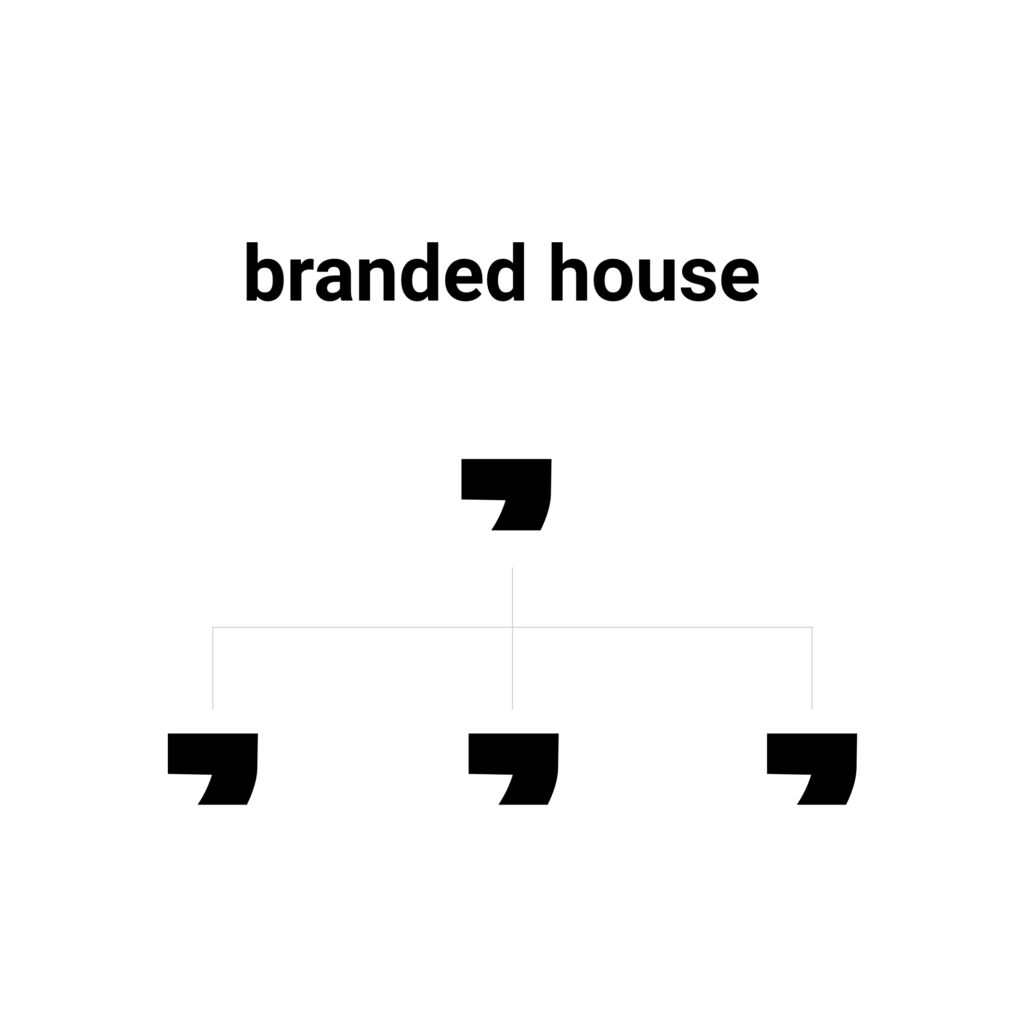Building an effective brand architecture is essential for the growth and success of companies and organizations. How best to go about it depends on several factors, but at least keep it simple and clear. In this 5-part series, you will read all about the pros and cons of the most common types of brand architecture, complemented by striking examples.
 Do you know which brand architecture best suits your objectives? Could you use professional support in doing so? Then contact our specialists on the subject: greetje@brandstrategists.be or maxim@brandstrategists.be.
Do you know which brand architecture best suits your objectives? Could you use professional support in doing so? Then contact our specialists on the subject: greetje@brandstrategists.be or maxim@brandstrategists.be.
The concept
With the ‘branded house’ structure, you carry one strong brand outward for your company. That umbrella brand enjoys great brand awareness and brand reputation. Therefore, that brand is more important than the individual brands your company offers that are spread across multiple product categories and markets. All those products or services get the same corporate identity or logo. This monolithic brand strategy always attaches importance to a ‘fit’ between the main brand and the brand extensions.Advantages of a branded house structure
Als je slechts één merk prominent communiceert naar de buitenwereld zorg je voor een consistente merkervaring en een uniform bedrijfsimago. Zo vermijd je verwarring bij de consument. Omdat je de investeringen in marketing en communicatie verdeelt is die monolithische merkstrategie ook een kostenefficiënte bedrijfsstrategie. Je kunt een beroep doen op synergiën en schaalvoordelen tussen de verschillende activiteiten. Nieuwe merkextensies kunnen meeprofiteren van de naamsbekendheid van het overkoepelend merk. Individuele producten en diensten versterken elkaar, wat zorgt voor een krachtige merkwaarde. Een branded house structuur is tot slot ook uiterst geschikt om je klant loyaal te maken aan jouw merk aan de hand van cross-selling. If you communicate only one brand prominently to the outside world, you ensure a consistent brand experience and a uniform corporate image. Thus, you avoid consumer confusion. Because you spread the investments in marketing and communication, this monolithic brand strategy is also a cost-efficient business strategy. You can leverage synergies and economies of scale between different activities. New brand extensions can benefit from the name recognition of the umbrella brand. Individual products and services reinforce each other, creating powerful brand equity. Finally, a branded house structure is also highly suitable for making your customers loyal to your brand through cross-selling.Disadvantages of a branded house structure
The biggest disadvantage of a branded house structure is its vulnerability. If the main brand suffers image damage, it negatively affects all individual brands. Conversely, the failure of an individual brand can also damage the umbrella brand through its direct association with it.Example of a branded house structure
Google is a good example of a brand adopting a monolithic brand strategy. The main Google brand includes Google Maps, Gmail, Google Drive, Google Play and Google Photos. Do you know which brand architecture best suits your objectives? Could you use professional support in doing so? Then contact our specialists on the subject: greetje@brandstrategists.be or maxim@brandstrategists.be.
Do you know which brand architecture best suits your objectives? Could you use professional support in doing so? Then contact our specialists on the subject: greetje@brandstrategists.be or maxim@brandstrategists.be.


